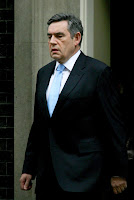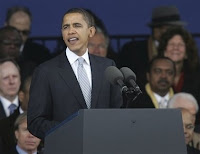 Do you remember the Ronald Reagan era; “Mr. Gorbachev, tear down this wall…” and his many other quotable quotes?
Do you remember the Ronald Reagan era; “Mr. Gorbachev, tear down this wall…” and his many other quotable quotes?
His speeches, excellent examples of wording, timing and the deft use of humor, are still studied by prospective politicians. And as a former actor, Reagan also understood the power of wardrobe and presentation.
Even during his downtime at the ranch, Reagan continued to project the American ideal at its best: the rugged cowboy. Clad in a jean jacket, Stetson and well-worn work gloves, he would pause on his horse just so, allowing the ever present photographer to capture the right image.
There was another, even more fascinating sartorial issue attached to Reagan: the red tie. Reagan himself was not overly devoted to red ties, however when word leaked out that the First Lady’s favorite color was red, guess what happened? Almost overnight, anyone seeking the president’s attention, from journalists to politicians, were sporting red ties. Their female counterparts suddenly discovered red blouses, scarves and jackets in their closets.
It was a fascinating, almost Pavlovian reaction to something never actually confirmed. Still, at a 1985 press conference, Reagan indirectly responded to a Wall Street Journal story that said he often called on reporters wearing red at his news conferences. Reagan, wearing a red tie himself that day, called on 12 reporters wearing red ties or dresses. Six non-red-wearing reporters also were recognized. You be the judge.
I had not thought about presidential ties too much until recently, when I saw the current President Bush and realized that lots of other politicians were wearing his tie. Clearly partial to a particular shade of light blue, Bush’s signature tie, white shirt and dark gray suit have become the presidential look of the moment.
The light blue color, say fashion experts, imbues the wearer with an impression of confidence, decisiveness and trust. It is a color of leadership – but unlike the traditional red power tie – without an overtone of aggression.
In testament to this fact, the candidates vying to replace Bush and even some foreign leaders, frequently sport an almost identical look. Barack Obama regularly wears one on the stump as does John McCain. It’s interesting that a look so associated with Bush has apparently gained bipartisan status. British Prime Minister Gordon Brown is known to occasionally sport this presidential look.
Lest you think that all this color coded subliminal messaging is nothing but hot air, consider Vice President Dick Cheney. Never one for elaborate wardrobes, he once wore a ski cap, snow boots and military parka to a formal ceremony observing the liberation of Auschwitz. All the other dignitaries wore suits and topcoats.
When it comes to office wear, Cheney is usually the embodiment of conservativeness, never straying far from red when it comes to ties. But, after a fateful accident in which he accidentally shot a friend while hunting, there he was on TV, explaining himself to a reporter while wearing a pink necktie. Dick Cheney in a pink necktie? It was soft and friendly, it made him seem so, dare I say, vulnerable. Once the issue passed however, so did that tie.
More recently, President Bush swapped his regular blue tie for a startling kelly green at a press conference to talk up the economy and highlight energy issues. It was such an abrupt departure from his traditional uniform that commentators and editorial writers across the country took notice. What was he saying with this choice? Was it an outgoing president showing a little personality, a visual plug for the environment or a carefully crafted metaphor showing his belief that the markets were coming back (green = $)?
Who knows? And who what will be next; but according to some industry experts the blue tie has almost run its course. When President Bush leaves the White House, his blue tie will likely lose favor too.






